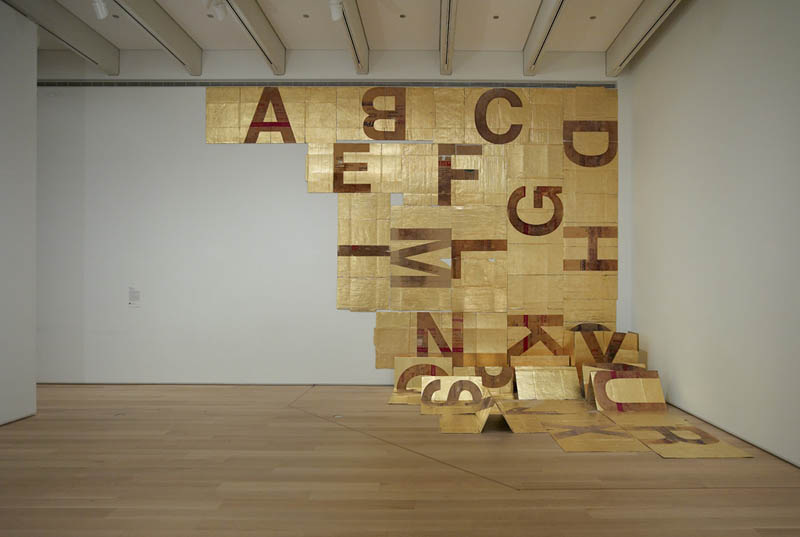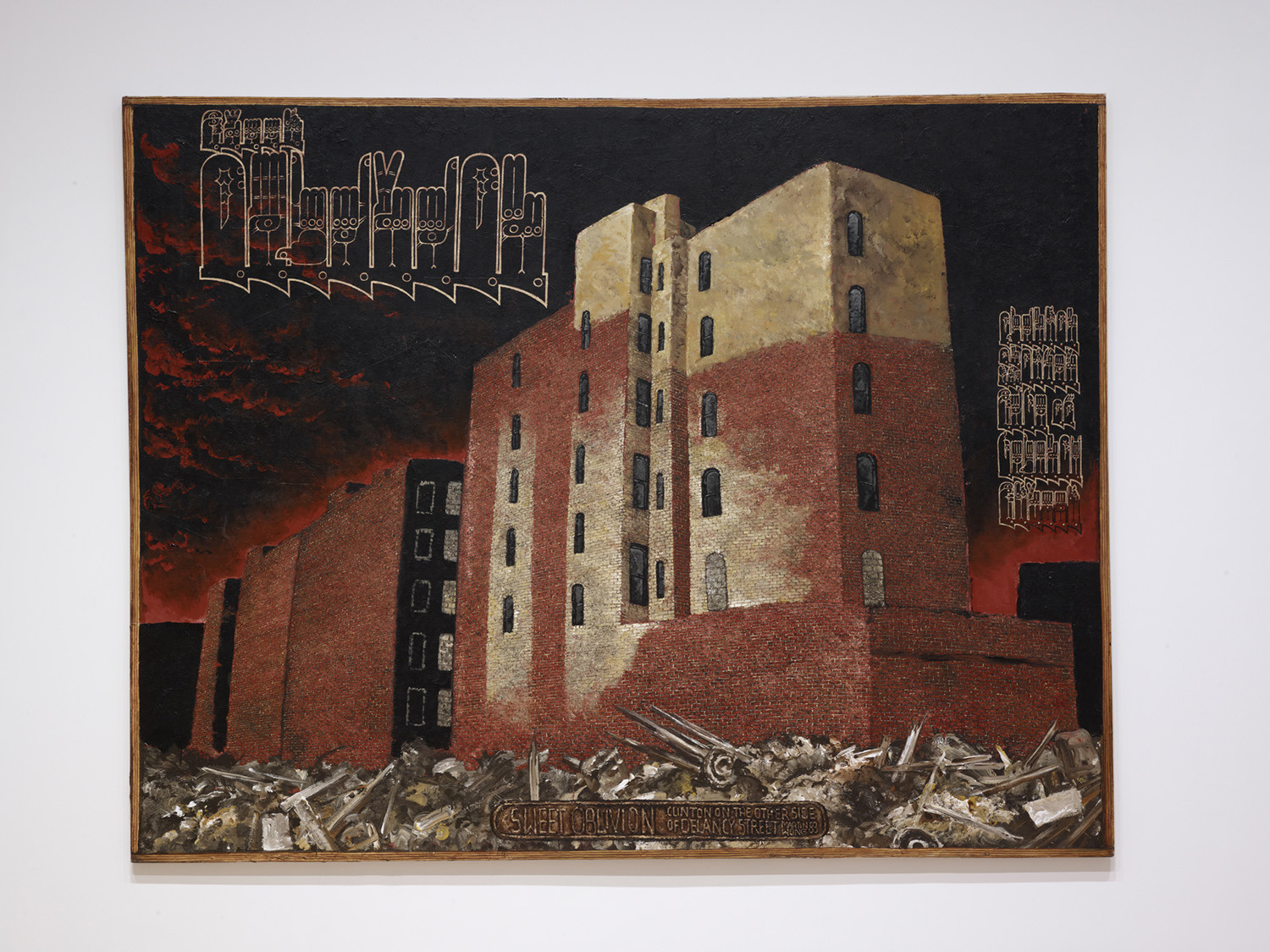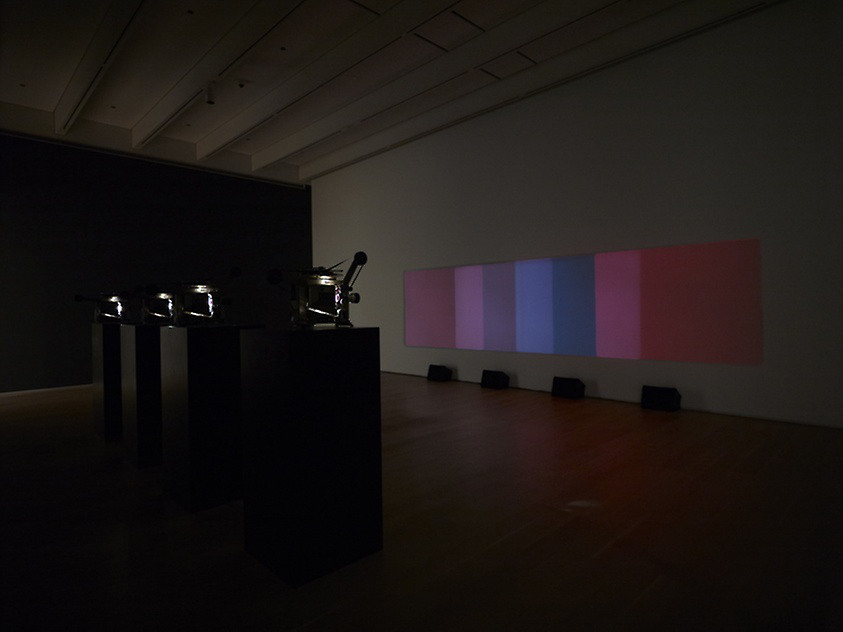Martin Wong’s singular approach to painting combines painstaking documentary realism with highly charged symbols and decorative motifs to reflect a culturally diverse worldview. Wong studied ceramics in northern California and was a member of several performance troupes in San Francisco before eventually becoming a self-taught painter and moving to New York. He arrived in 1978 and joined the lively East Village art scene, filled with artists making political work about their personal and cultural experiences. His urban landscapes show a critical engagement with gritty everyday scenes; an obsessive focus on detail; a flair for ornamentation; and an affinity for language, symbols, and storytelling.
Illustrating a modern-day ruin with the epic scale of traditional history painting, Sweet Oblivion depicts a decaying tenement near the artist’s home and studio in the Lower East Side neighborhood of Manhattan. The fortresslike buildings—made up of hundreds of minute, individually rendered bricks—are surrounded by a sea of refuse and rubble. Alighting on the surface of a fiery, apocalyptic sky, two groupings of Wong’s trademark hands reiterate the caption in American Sign Language finger spelling: “Sweet Oblivion, Clinton on the other side of Delancy Street.” Typical of Wong’s canvases, in which the harsh realities of urban life are offset with an uncommon optimism, the delicately gilded, stylized characters—which pay homage to graffiti art, Persian scripts, and hieroglyphics—appear here as emblems of beauty and hope in an otherwise bleak scene.


